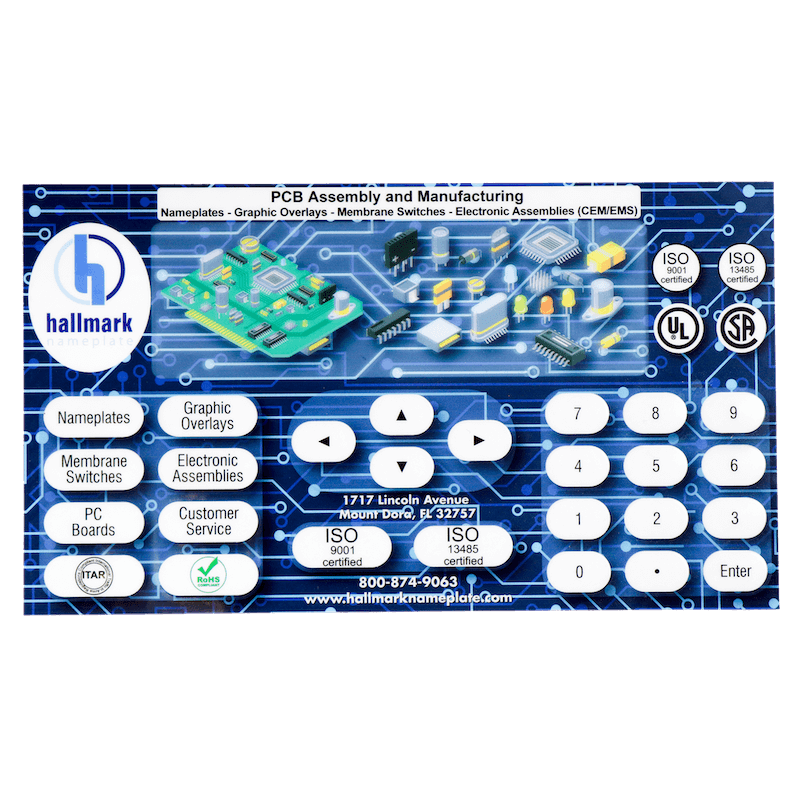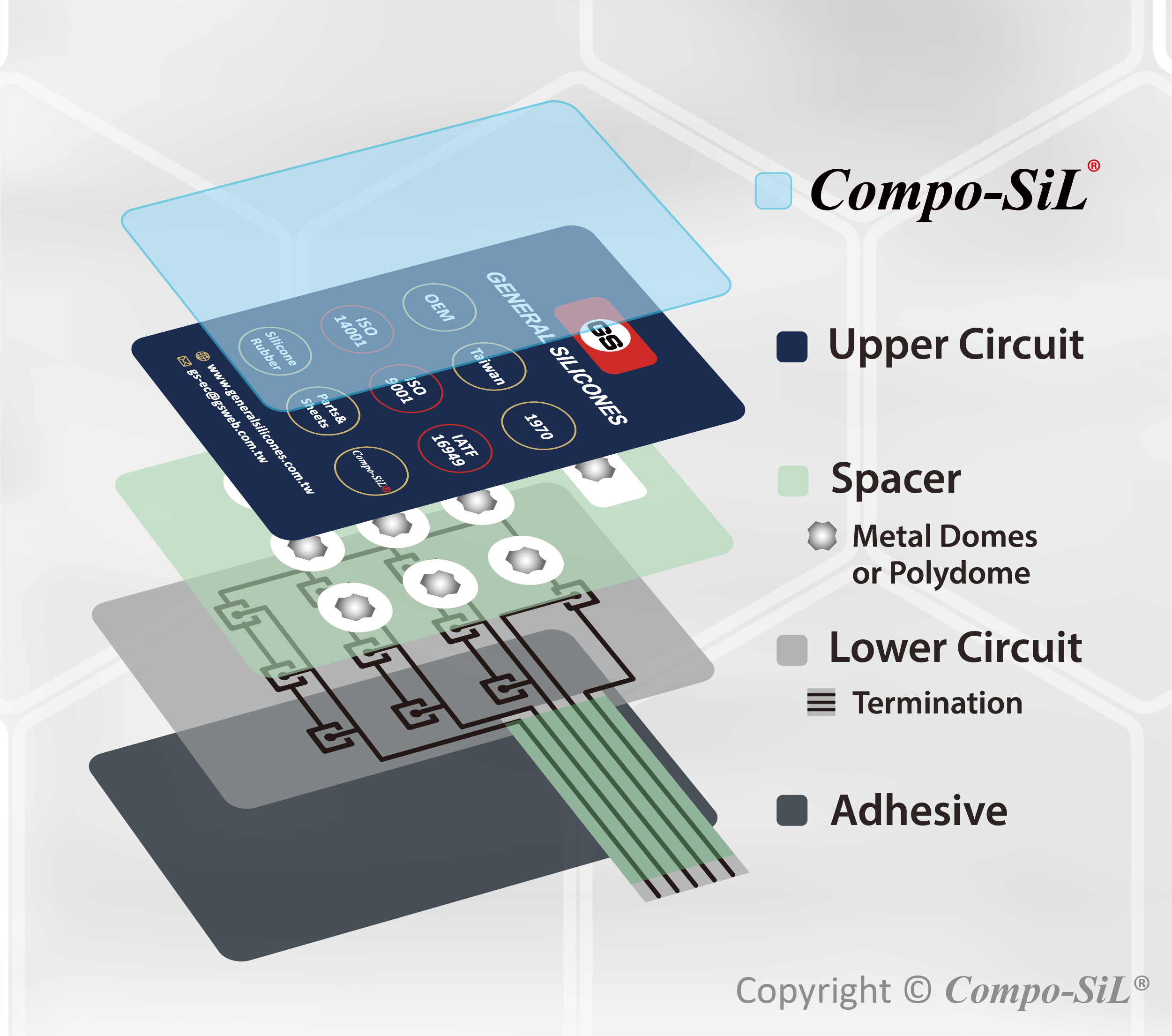Understanding the Relevance of Membrane Switches in Interface
Membrane buttons are important elements in the style of effective interface, helping with not just performance yet likewise boosting aesthetic allure and user communication. Their distinct attributes, such as resistance to environmental aspects and customizable styles, make them ideal for a diverse range of applications throughout multiple markets. As we discover the various benefits and future trends related to Membrane modern technology, it becomes clear that these buttons are greater than just elements; they stand for a merging of development and functionality. The effects of this technology on user experience deserve checking out further.
What Are Membrane Switches?

The spacer layer, which consists of sticky buildings, permits the separation of the circuit layer from the overlay, guaranteeing that the switch remains in a non-activated state till pushed. When pressure is put on the overlay, it presses the spacer layer, connecting the space and completing the circuit in the underlying layer. This layout not just minimizes the physical space needed for standard mechanical switches yet likewise improves the sturdiness of the device, as Membrane buttons are normally resistant to dirt, dampness, and other ecological elements.
Commonly located in applications ranging from customer electronics to clinical devices, Membrane switches are indispensable to contemporary innovation, supplying a efficient and easy to use interface that lines up with modern style needs.
Advantages of Membrane Buttons
While various button technologies exist, Membrane Switches offer unique benefits that make them particularly desirable in numerous applications. One of the main advantages of Membrane switches is their small layout, which allows for space-saving applications in tools where property is restricted. Their slim account not only improves visual allure but likewise promotes light-weight building.
An additional substantial advantage is their resistance to environmental aspects. Membrane buttons are generally sealed versus wetness, dirt, and pollutants, making them optimal for usage popular atmospheres, such as medical gadgets and commercial tools. This resilience prolongs the life expectancy of the button, lowering upkeep prices and boosting reliability.
Moreover, Membrane switches can be customized to meet particular design demands, integrating distinct graphics and colors that improve individual interaction. Their tactile feedback options can also be tailored to provide a satisfying user experience. Additionally, Membrane buttons are economical, especially in high-volume applications, as they can be created effectively.
Applications in Various Industries

In the customer electronics sector, Membrane switches are widespread in gadgets such as microwaves, cleaning makers, and remote controls. Their responsive feedback and visual options boost individual experience while giving a smooth, modern appearance. Additionally, auto producers make use of Membrane buttons in dashboard controls and infomercial systems, where space is restricted, and user interaction is critical.
In addition, the industrial field leverages Membrane switches in control panels for equipment and equipment, enabling for instinctive operation in usually severe settings. Their resistance to chemicals and dampness makes certain long life and integrity in these applications. In general, the versatility of Membrane Switches contributes dramatically to their widespread use, making them indispensable in different technical domain names.
Design Considerations for Membrane Buttons

When designing Membrane switches, a number of crucial factors to consider have to be taken into account to guarantee ideal performance and individual experience. To start with, the selection of products is critical; selecting resilient, top notch substratums can improve the button's durability and resistance to ecological aspects such as dampness and temperature level variations.
Second of all, the style of the graphic overlay ought to prioritize clarity and convenience of usage. Symbols and text must be legible, and the format must assist in intuitive communication (membrane switches). In addition, tactile feedback is essential; incorporating a responsive dome or other systems can boost the individual experience by supplying physical confirmation of activation
One more vital element is the switch's electric performance. Developers need to guarantee that the conductive traces are correctly designed to lessen resistance and avoid signal disturbance. This includes assessing the needed actuation force and making certain compatibility with the electronic parts they you can find out more will user interface with.

Future Patterns in Membrane Technology
As innovation remains to advancement, Membrane buttons are poised to advance considerably, driven by technologies in materials and making techniques. One emerging fad is the incorporation of sophisticated products, such as conductive inks and flexible substratums, which improve durability and minimize the overall weight of Membrane switches. These products not just boost the tactile action yet also allow for the style of buttons that can withstand harsher ecological problems.
Furthermore, the combination of touch-sensitive modern technologies is changing traditional Membrane Switches into more interactive interface. Capacitive touch sensing units installed within Membrane switch panels can supply an extra intuitive and responsive individual experience, lining up with the expanding need for sleek, contemporary styles in customer electronic click to investigate devices.
In addition, innovations in printing strategies, such as digital and 3D printing, enable rapid prototyping and personalization of Membrane buttons. This versatility permits manufacturers to respond much more rapidly to market demands and consumer preferences.
Lastly, sustainability is ending up being a substantial focus, with makers discovering environmentally friendly materials and processes. As these trends unravel, the future of Membrane modern technology promises enhanced performance, visual allure, and ecological obligation, solidifying their role in innovative customer interfaces across various sectors.
Final Thought
In final thought, Membrane Switches stand for a vital element in the layout of individual interfaces, incorporating functionality with aesthetic adaptability. As developments in modern technology continue, the advancement of Membrane switches is anticipated to more fine-tune individual interfaces, driving innovation and enhancing use in an increasingly complex technical landscape.
Membrane buttons are essential elements in the layout of effective user interfaces, assisting in not just functionality however additionally enhancing aesthetic charm and customer interaction.Membrane Switches serve as an essential component in different individual interfaces, promoting a smooth communication in between users and electronic devices.While various switch innovations exist, Membrane Switches offer unique advantages that make them especially preferable in different applications.In addition, Membrane buttons can be tailored to fulfill certain layout needs, including special graphics and shades that improve individual interaction.In final thought, Membrane Switches stand for an essential part in the layout of customer interfaces, integrating performance with aesthetic flexibility.
Comments on “The Environmental Benefits of Choosing Membrane Switches for Your Products”